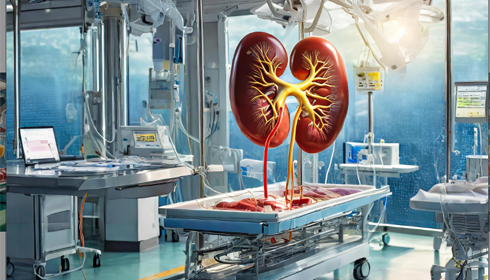
Lower salt and fluid in body can spark kidney regeneration: Study
Scientists at the University of Southern California (USC) may have found a new way to treat kidney disease. They think that changing the amounts of salt and water in the body could help the kidneys grow back. USC stem cell scientist Janos Peti-Peterdi led this new approach, which the NIH funded and published in The Journal of Clinical Investigation recently.
The research was about a small group of kidney cells called Macula densa (MD). These cells are in a critical area that controls how the kidneys sense salt and function. Explaining abot the study, Peti-Peterdi said, "Our goal is to find a cure for kidney disease, which affects millions of people around the world." At the moment, treatments only ease the symptoms, and by the time the disease is identified, the damage is often too far gone to be fixed.
The team looked into how kidneys have changed over time to keep the right mix of salt and water, drawing on ideas from evolutionary biology. Peti-Peterdi said, "This evolutionary adaptation helped animals move from seawater to land." "MD cells are part of a more complex kidney structure that helps mammals and birds live and do well in a wide range of environments."
In their tests, scientists gave mice a low-salt meal along with an ACE inhibitor, a drug that lowers salt and fluid levels even more. This routine accelerated the healing process in just the MD area, demonstrating how important it is for kidney repair.
More research into MD cells showed that they are similar to nerve cells, which suggests that they share a way of regenerating organs. Researchers found certain DNA signals, including Wnt, NGFR, and CCN1. People with chronic kidney disease (CKD) have significantly less CCN1.
Scientists tested their ideas by growing CCN1 and MD cells in low-salt conditions to treat mice with focal segmental glomerulosclerosis, a type of CKD. The results from both methods were encouraging, but the MD cell treatment made the kidneys work and look much better.
Peti-Peterdi said, "We think this approach offers a new paradigm for kidney repair." "The things we found could lead to completely new ways of treating kidney diseases."
Researchers from USC, the University of Michigan, the University of Cologne, the University of Illinois at Chicago, Yale University School of Medicine, Johns Hopkins University, and the University of Oxford all worked together on the project.
The study shows that changing the amounts of salt and water in the body might help the kidneys heal faster. This gives people around the world who have chronic kidney diseases hope for future treatments.